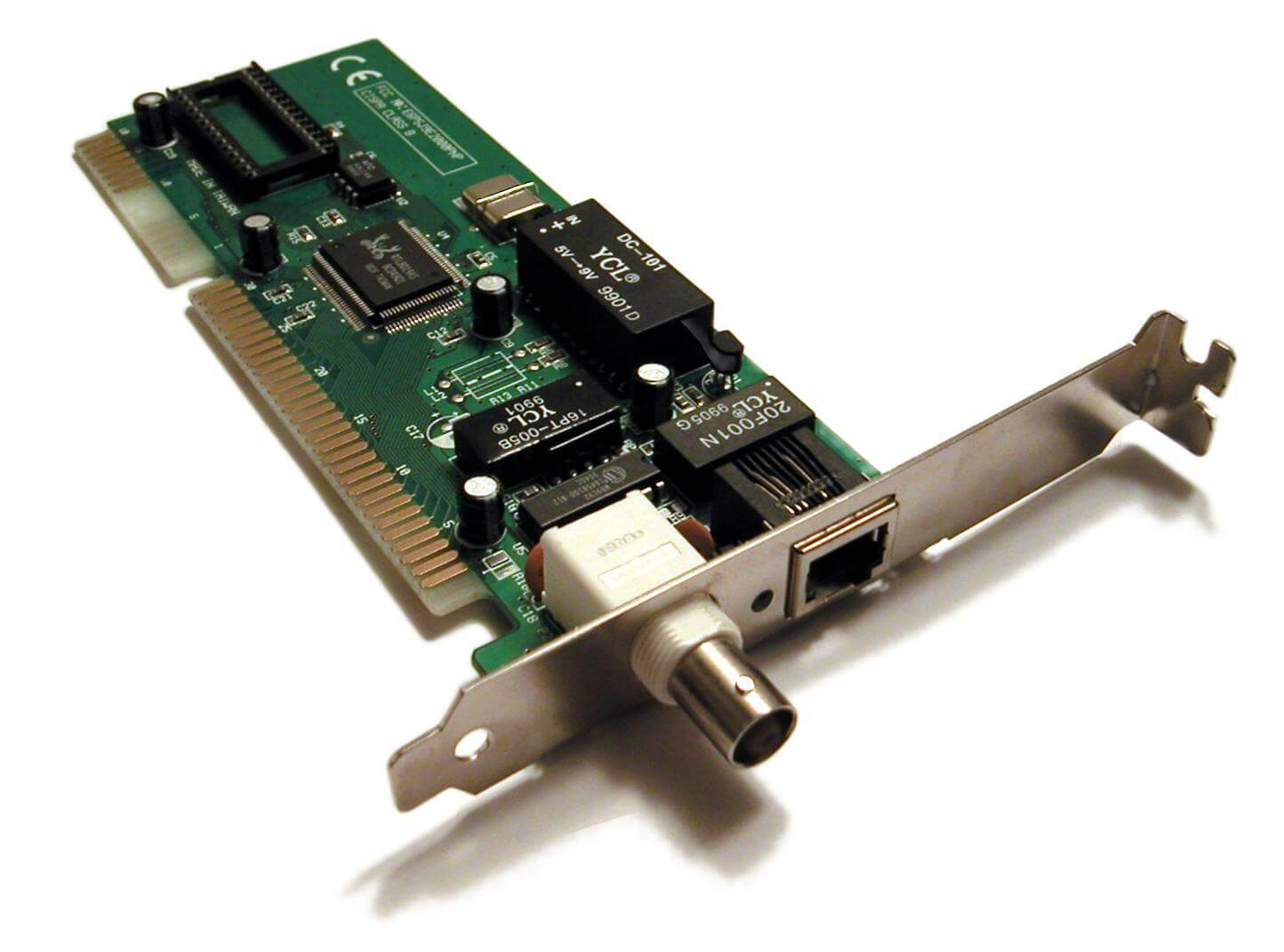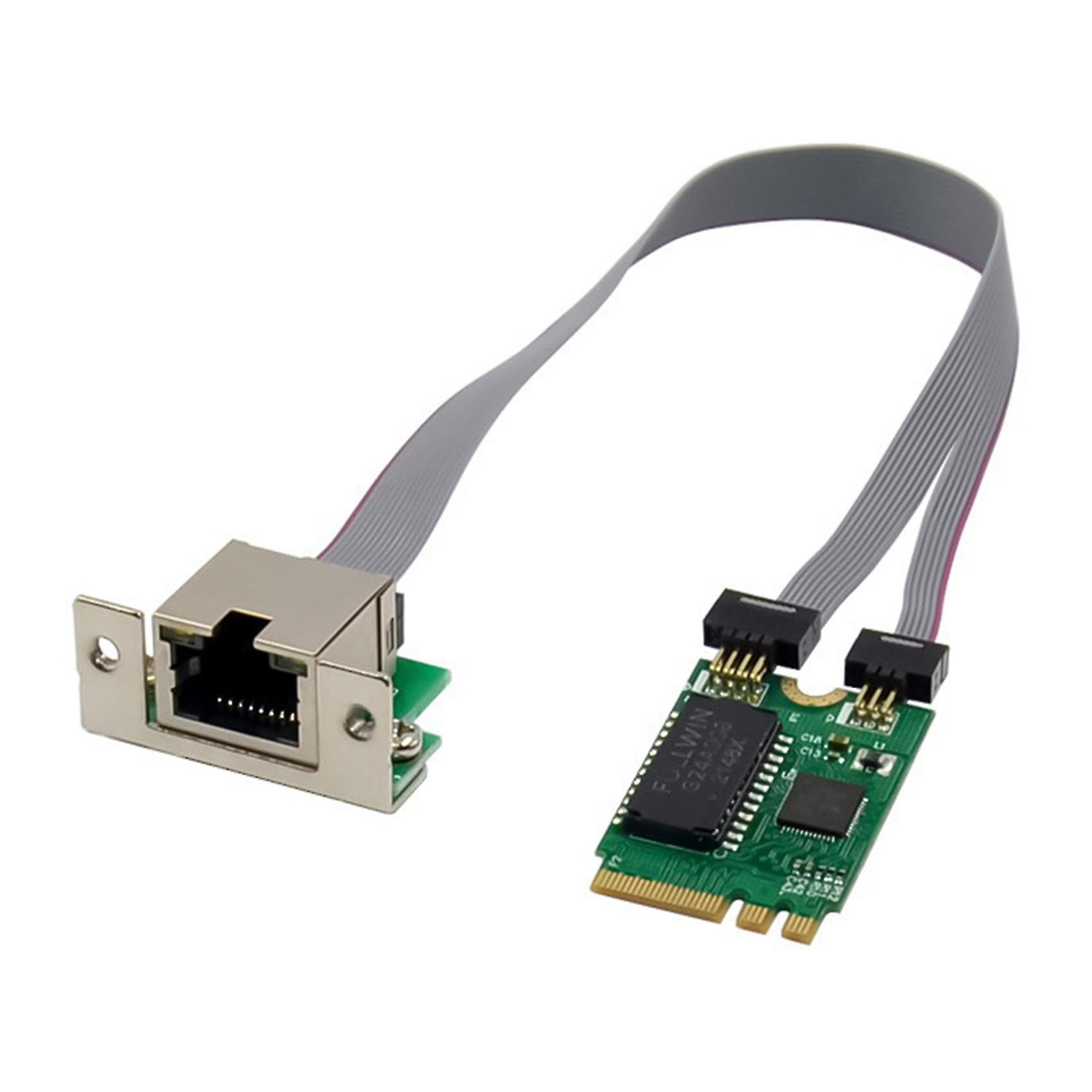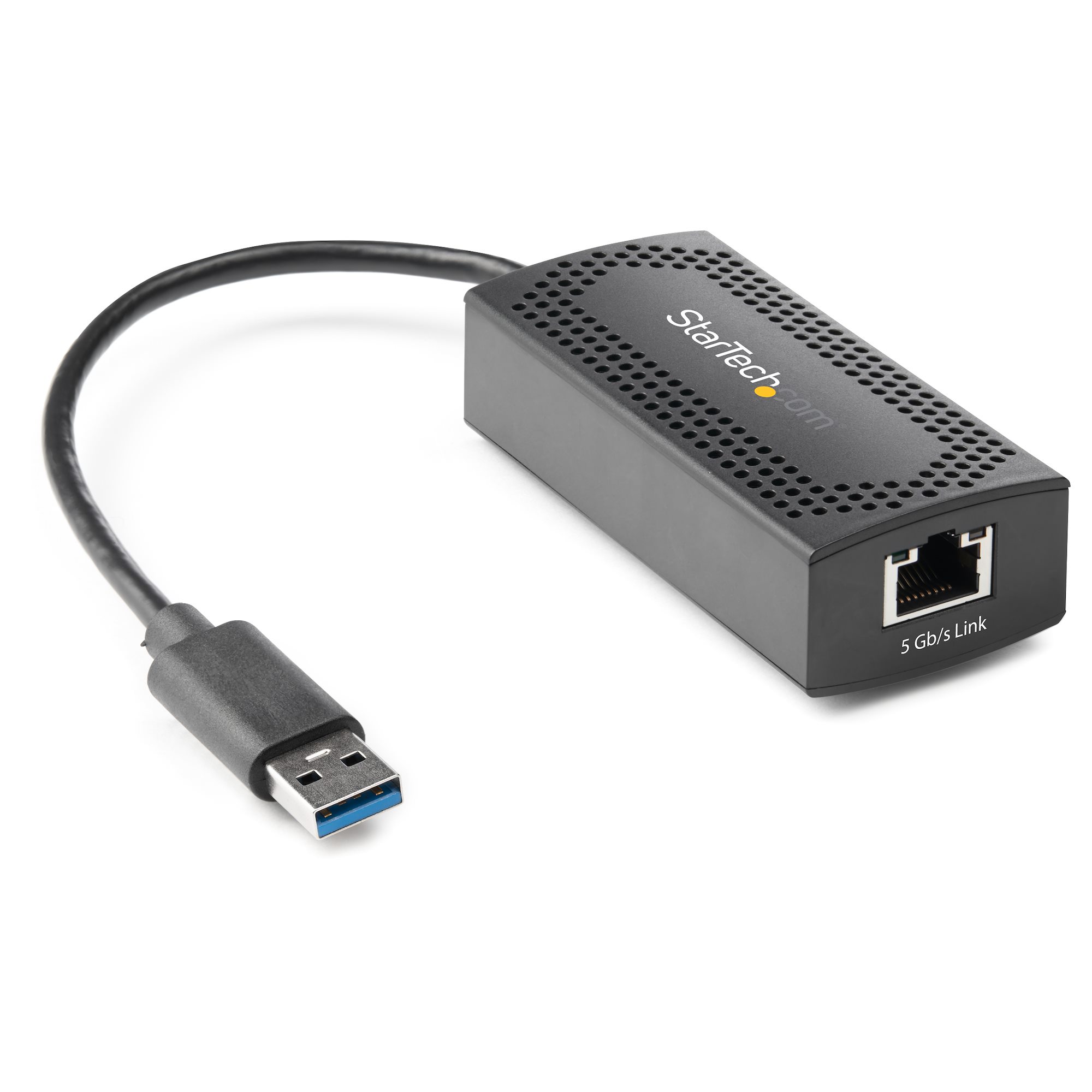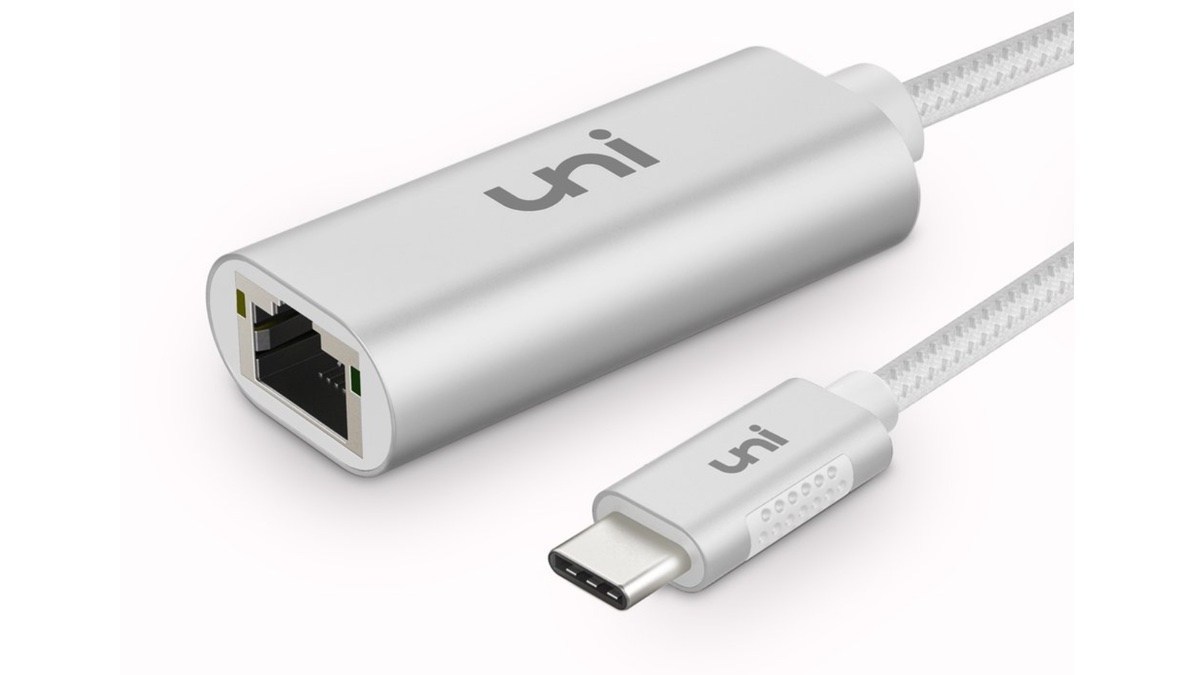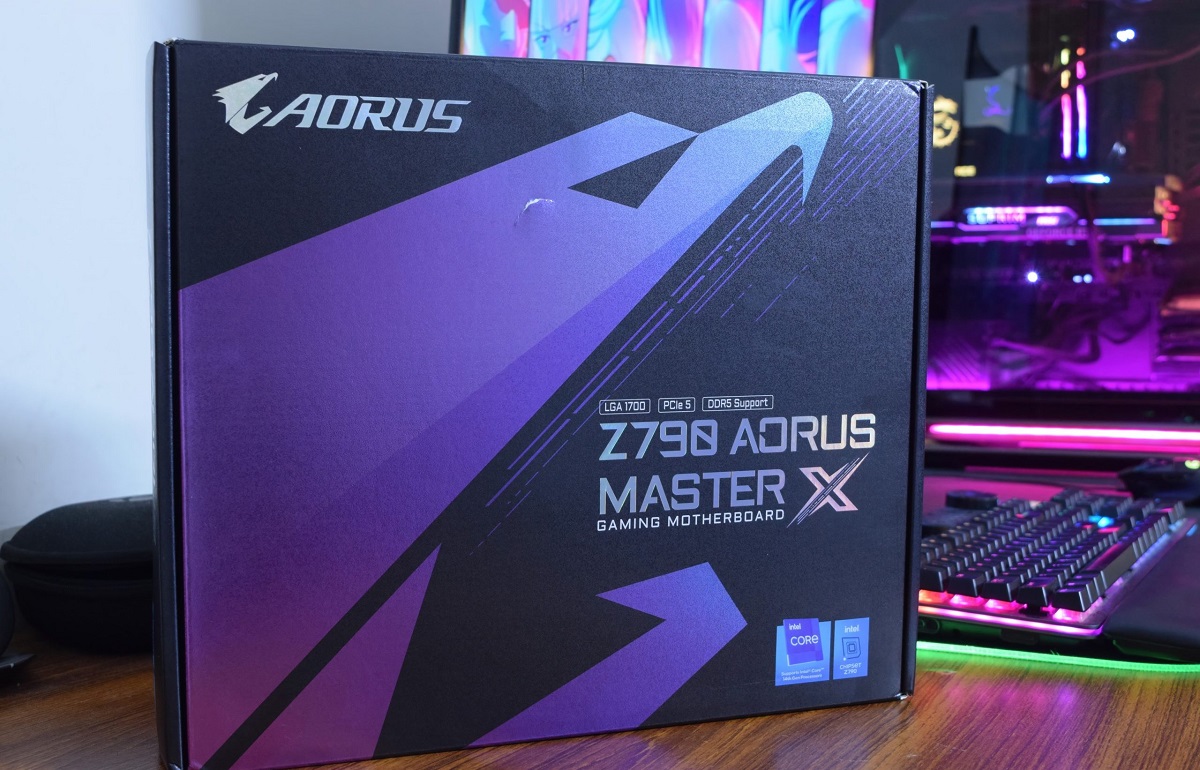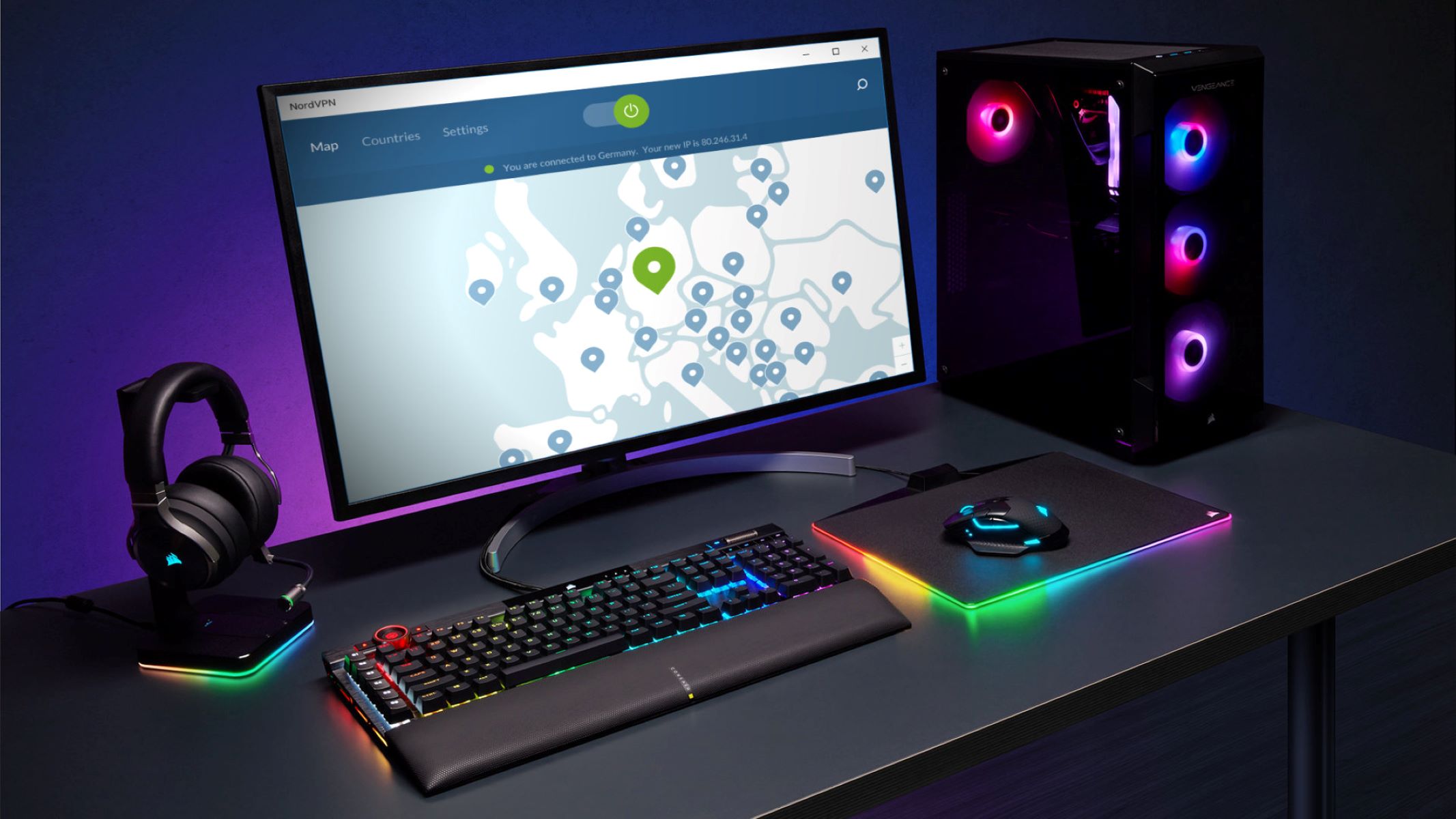Introduction
Welcome to the world of 10Gb Ethernet, a revolutionary technology that is transforming the way we connect and transfer data. In today’s digital age, where speed and efficiency are paramount, 10Gb Ethernet has emerged as a game-changer in the field of networking.
Whether you’re a tech enthusiast, a business professional, or simply curious about the latest advancements in the realm of networking, this article will shed light on what 10Gb Ethernet is all about and how it is revolutionizing data transmission.
With the exponential growth of data and the increased demand for high-speed connectivity, traditional Ethernet standards were unable to keep up. This led to the development of 10Gb Ethernet, a faster and more efficient solution that meets the bandwidth requirements of modern networks.
In this article, we will explore the intricacies of 10Gb Ethernet, including its definition, advantages, applications, and challenges. We will also delve into the differences between 10Gb Ethernet and other Ethernet standards, as well as the cost considerations associated with implementing this technology.
Furthermore, we will discuss the future prospects of 10Gb Ethernet and how it is expected to shape the networking landscape in the years to come. Whether you’re an IT professional looking to upgrade your network infrastructure or a curious individual seeking to expand your knowledge, this article aims to provide you with a comprehensive understanding of 10Gb Ethernet.
So, buckle up and get ready to dive into the exciting world of 10Gb Ethernet, where speed, efficiency, and connectivity converge to create a network that can handle the demands of our increasingly digital world.
What is 10Gb Ethernet?
10Gb Ethernet, also known as 10 Gigabit Ethernet or 10GbE, is an Ethernet standard that supports data transfer rates of 10 gigabits per second (Gbps). It is a high-speed networking technology that provides faster and more efficient communication between devices within a network.
At its core, 10Gb Ethernet utilizes the Ethernet protocol, which is a set of rules and standards for transmitting data over a network. Ethernet has been the go-to networking technology for decades, originally developed for local area networks (LANs) and now widely adopted for both LANs and wide area networks (WANs).
With 10Gb Ethernet, the data transfer speeds are ten times faster than the previous Gigabit Ethernet standard, making it ideal for bandwidth-intensive applications and environments that require high-performance networking. Whether it’s transferring large files, streaming high-definition video, or handling heavy network traffic, 10Gb Ethernet ensures smooth and efficient data transmission.
One of the key advantages of 10Gb Ethernet is its backward compatibility with existing Ethernet infrastructure. This means that organizations can upgrade their network to 10Gb Ethernet without having to replace their current Ethernet switches, routers, and cables. It provides a seamless migration path for businesses looking to enhance their network performance.
10Gb Ethernet can be deployed using various physical interfaces, including fiber optics and copper cables. Fiber optic cables are commonly used for long-distance connections, while copper cables are more suitable for short-range connections within a data center or office environment.
In terms of network architecture, 10Gb Ethernet can be implemented in different topologies, such as star, mesh, or ring configurations, depending on the specific needs and requirements of the network infrastructure.
In summary, 10Gb Ethernet is a high-speed networking technology that allows for data transfer rates ten times faster than Gigabit Ethernet. It offers backward compatibility, improved network performance, and the ability to handle bandwidth-intensive applications. With its seamless migration path and various deployment options, 10Gb Ethernet has become the go-to solution for organizations seeking to meet the demands of our increasingly data-driven world.
Understanding Ethernet
To fully grasp the concept of 10Gb Ethernet, it’s essential to have a solid understanding of Ethernet itself. Ethernet is a set of networking technologies and protocols that enable the transmission of data between devices within a local area network (LAN) or wide area network (WAN).
First introduced in the 1970s, Ethernet quickly became the de facto standard for LAN connectivity due to its simplicity, flexibility, and scalability. It operates on the media access control (MAC) layer and the physical layer of the OSI model, providing a reliable and efficient means of communication.
Ethernet relies on the principle of packet switching, where data is divided into small packets and routed through the network to its destination. Each packet is encapsulated with necessary headers and trailers, containing source and destination MAC addresses, error detection codes, and other control information.
The Ethernet protocol allows for multiple devices to share the same network medium, such as twisted pair cables or fiber optics, through a method called Carrier Sense Multiple Access with Collision Detection (CSMA/CD). This means that devices listen for other signal transmissions and wait for a clear channel before transmitting their own data, reducing the likelihood of data collisions.
Ethernet also supports various data transmission speeds, commonly denoted by the term “Gigabit Ethernet” or “10Gb Ethernet.” These designations refer to the data transfer rates, measured in gigabits per second (Gbps), that Ethernet can handle. The widely adopted standards include Fast Ethernet (100 Mbps), Gigabit Ethernet (1 Gbps), and 10Gb Ethernet (10 Gbps).
The evolution of Ethernet has brought advancements in cable types, switching technologies, and network equipment. Copper twisted pair cables, such as Cat5e and Cat6, are commonly used for shorter distances, while fiber optic cables offer higher speeds and longer transmission distances.
Managed switches are often used in Ethernet networks to provide control over network traffic, create VLANs (virtual LANs), and implement Quality of Service (QoS) policies to prioritize certain types of traffic. Additionally, routers and gateways are used to connect multiple LANs or extend Ethernet connectivity to WANs.
Overall, Ethernet has become the foundation of modern networking, enabling reliable and efficient data communication across a wide range of devices and applications. With its flexibility, scalability, and support for high-speed data transfer, Ethernet serves as the backbone of today’s digital infrastructure, facilitating the seamless flow of information in both personal and business environments.
Advantages of 10Gb Ethernet
10Gb Ethernet offers a myriad of advantages that make it a highly desirable networking technology. Let’s explore some of the key benefits that come with implementing 10Gb Ethernet in your network infrastructure.
1. Increased Speed: The most obvious advantage of 10Gb Ethernet is its blazing-fast speed. With data transfer rates of 10 gigabits per second (Gbps), 10Gb Ethernet provides a significant boost in network performance compared to previous Ethernet standards. This increased speed ensures faster file transfers, quicker backup and restore processes, and smoother multimedia streaming.
2. Enhanced Productivity: By enabling quick data transmission and reducing network congestion, 10Gb Ethernet helps enhance productivity levels within an organization. Large files can be transferred in seconds, saving valuable time and allowing employees to focus on their tasks without waiting for data to load or transfer.
3. Scalability: 10Gb Ethernet offers scalability, allowing networks to accommodate increasing data demands. As businesses grow and require more bandwidth, 10Gb Ethernet provides the flexibility to handle higher data loads without significant disruptions or the need for frequent infrastructural upgrades.
4. Future-Proofing: By adopting 10Gb Ethernet, organizations are preparing themselves for the future and positioning themselves for advancements in technology. As data transmission requirements continue to evolve and increase, having a network infrastructure that can support higher speeds ensures compatibility with future devices and applications.
5. Reduced Latency: 10Gb Ethernet significantly reduces network latency, resulting in improved response times for real-time applications. Whether it’s video conferencing, online gaming, or financial transactions, the lower latency provided by 10Gb Ethernet ensures smooth and uninterrupted operations.
6. Consolidation: 10Gb Ethernet allows for the consolidation of multiple network connections into a single, high-speed link. This reduces the complexity and overhead associated with managing multiple network interfaces, simplifying network architecture and reducing overall costs.
7. Virtualization Support: 10Gb Ethernet is well-suited for virtualized environments, where multiple virtual machines (VMs) coexist on a single server. The increased bandwidth provided by 10Gb Ethernet allows for seamless VM migration, improved performance for virtualized applications, and better utilization of server resources.
8. Improved Storage Networking: 10Gb Ethernet is crucial for storage networking solutions, such as Network-Attached Storage (NAS) and Storage Area Networks (SANs). The high data transfer rates enable efficient backup and replication of data, ensuring the integrity and availability of critical business information.
Overall, the advantages of 10Gb Ethernet include increased speed, enhanced productivity, scalability, future-proofing, reduced latency, consolidation, virtualization support, and improved storage networking. These benefits make 10Gb Ethernet an ideal choice for organizations seeking to elevate their network performance and stay ahead in today’s data-driven world.
Applications of 10Gb Ethernet
10Gb Ethernet has found wide-ranging applications in various industries due to its high-speed data transfer capabilities and improved network performance. Let’s explore some of the key areas where 10Gb Ethernet is making a significant impact.
1. Data Centers: Data centers require robust networking solutions to handle the massive amount of data generated and processed within their infrastructure. 10Gb Ethernet is widely used in data centers for server connectivity, storage networking, and interconnecting switches, providing the necessary bandwidth to support demanding applications and ensuring smooth data flow.
2. Media and Entertainment: The media and entertainment industry heavily relies on high-speed data transfer for content creation, editing, and distribution. With the emergence of high-definition video, 3D graphics, and virtual reality, the need for fast and efficient data transfer is critical. 10Gb Ethernet enables seamless collaboration, accelerates rendering and transcoding, and facilitates real-time streaming of high-quality media content.
3. Research and Education: Educational institutions, research facilities, and laboratories often deal with large datasets and complex simulations. 10Gb Ethernet helps facilitate data sharing, collaboration, and data-intensive research projects by providing the necessary bandwidth for quick and reliable data transfer. It supports initiatives such as e-learning, digital libraries, and high-performance computing.
4. Financial Services: In the fast-paced world of financial services, milliseconds matter. 10Gb Ethernet enables high-speed connections for trading platforms, market data analysis, and other financial applications that require rapid data processing and transaction speeds. It helps ensure quick and reliable communication between stock exchanges, brokerage firms, and financial institutions.
5. Healthcare: The healthcare industry relies on technology for various applications, including electronic medical records (EMR), medical imaging, telemedicine, and real-time monitoring. 10Gb Ethernet supports the fast and secure transfer of patient data, enhances the efficiency of healthcare workflows, and enables remote collaboration among healthcare professionals.
6. Cloud Computing: Cloud service providers require robust networking solutions to deliver reliable and high-performance cloud services to their customers. 10Gb Ethernet is essential for building the infrastructure backbone of cloud platforms, supporting virtual machine migration, ensuring fast data retrieval, and enabling seamless access to cloud-based applications and services.
7. High-Performance Computing (HPC): HPC environments, such as scientific research labs and engineering facilities, demand high-speed data transfer for simulations, modeling, and data analysis. 10Gb Ethernet is instrumental in accelerating computationally intensive tasks and allows for efficient communication between high-performance computing clusters.
8. Virtualization: Virtualized environments heavily rely on high-speed networking to deliver optimal performance and resource utilization. 10Gb Ethernet provides the necessary bandwidth for seamless virtual machine migration, enables better network isolation through VLANs, and supports the consolidation of multiple virtualized environments onto a single physical server.
These are just a few examples of the wide range of applications that benefit from the use of 10Gb Ethernet. Its high-speed capabilities, reliability, and scalability make it a versatile and essential technology for various industries, ensuring smooth operations, quick data transfer, and improved network performance.
Differences between 10Gb Ethernet and other Ethernet standards
While Ethernet is a widely adopted networking technology, there are several key differences between 10Gb Ethernet and other Ethernet standards that are important to understand. Let’s explore these differences and how they impact network performance and capabilities.
1. Speed: The primary difference between 10Gb Ethernet and other Ethernet standards is the data transfer speed. While Fast Ethernet operates at 100 megabits per second (Mbps) and Gigabit Ethernet operates at 1 gigabit per second (Gbps), 10Gb Ethernet operates at an impressive speed of 10 gigabits per second (Gbps). This tenfold increase in speed allows for much faster data transfer, reducing latency and improving network performance.
2. Bandwidth: With increased speed comes increased bandwidth. 10Gb Ethernet offers higher bandwidth capacity compared to Fast Ethernet and Gigabit Ethernet, allowing for larger amounts of data to be transferred simultaneously. This is especially advantageous for bandwidth-intensive applications, such as multimedia streaming, virtualization, and large-scale data transfer.
3. Infrastructure: Implementing 10Gb Ethernet typically requires an upgrade in infrastructure components. While Fast Ethernet and Gigabit Ethernet can use standard Cat5e or Cat6 copper cables, 10Gb Ethernet often requires higher-grade Cat6a or Cat7 cables, or even fiber optic cables, to handle the increased bandwidth. Additionally, network switches and network interface cards (NICs) designed for 10Gb Ethernet are specifically built to support the higher data rates.
4. Distance: Another difference lies in the distance limitations of each Ethernet standard. Fast Ethernet has a maximum range of 100 meters, while Gigabit Ethernet can reach up to 1000 meters with fiber optic cables. 10Gb Ethernet, on the other hand, has more limited distance capabilities. With copper cables, it can achieve distances of up to 55 meters, while fiber optic cables can reach much greater distances, typically up to 10 kilometers, depending on the type of fiber used.
5. Cost: As expected, the cost of implementing 10Gb Ethernet is generally higher than that of Fast Ethernet or Gigabit Ethernet. Upgrading network infrastructure components, such as switches, cables, and NICs, to support 10Gb Ethernet can be more expensive. However, as technology advances and becomes more widely adopted, the cost of 10Gb Ethernet equipment is gradually decreasing, making it more accessible to businesses of varying sizes.
6. Power Consumption: 10Gb Ethernet typically consumes more power compared to Fast Ethernet and Gigabit Ethernet due to the increased bandwidth and data transfer speed. However, advancements in power management and energy-efficient designs have helped reduce power consumption, making 10Gb Ethernet more energy-efficient while still providing high-performance networking capabilities.
7. Compatibility: One advantage of 10Gb Ethernet is its backward compatibility with existing Ethernet infrastructure. While an upgrade in network components is required for full 10Gb Ethernet capabilities, it can coexist with slower Ethernet standards, allowing for a gradual migration process without a complete infrastructure overhaul.
In summary, the main differences between 10Gb Ethernet and other Ethernet standards lie in speed, bandwidth, infrastructure requirements, distance limitations, cost, power consumption, and compatibility. Understanding these differences is crucial in determining the right Ethernet standard for specific networking needs and ensuring optimal network performance and scalability.
Challenges of implementing 10Gb Ethernet
While 10Gb Ethernet offers numerous advantages, there are also several challenges associated with implementing this high-speed networking technology. Let’s explore some of the key challenges that organizations may face when deploying 10Gb Ethernet.
1. Infrastructure Upgrades: Implementing 10Gb Ethernet often requires upgrading the existing network infrastructure. This includes replacing network switches, cables, and network interface cards (NICs) to support the higher data rates. Upgrading the infrastructure can be time-consuming, costly, and may disrupt existing network operations.
2. Compatibility: While 10Gb Ethernet is backward compatible with existing Ethernet infrastructure, there may still be compatibility issues between older networking devices and newer 10Gb Ethernet equipment. Ensuring compatibility and seamless integration may require additional configuration and troubleshooting.
3. Cable Distance Limitations: Depending on the type of cable used, 10Gb Ethernet may have distance limitations. Copper cables typically have a limited reach, with distances of up to 55 meters, while fiber optic cables can achieve much greater distances. Organizations with larger physical network infrastructures may need to carefully plan and design their network topology to accommodate these distance limitations.
4. Cost: Implementing 10Gb Ethernet can be a significant investment. The cost of upgrading network switches, cables, and NICs to support 10Gb Ethernet can be substantial, especially for smaller organizations with limited budgets. Additionally, the cost of skilled IT personnel or consultants may be required for proper configuration and deployment.
5. Power Consumption and Cooling: 10Gb Ethernet typically consumes more power compared to lower-speed Ethernet standards. The increased power consumption can lead to higher energy costs and may require additional cooling measures to prevent overheating in networking equipment. Organizations need to consider power and cooling requirements when deploying 10Gb Ethernet to ensure optimal performance and mitigate potential issues.
6. Compatibility with Legacy Systems: Organizations with legacy systems or applications may encounter compatibility challenges when migrating to 10Gb Ethernet. Legacy systems may not have the necessary network adapters or drivers to support 10Gb Ethernet, requiring additional upgrades or workarounds to integrate them into the network infrastructure.
7. Management and Monitoring: As network speed and complexity increase with 10Gb Ethernet, effective network management and monitoring become critical. IT teams need advanced tools and technologies to monitor, troubleshoot, and optimize the performance of the 10Gb Ethernet network. Proactive monitoring and management strategies are necessary to ensure smooth operation and rapid response to any issues that may arise.
Despite these challenges, the benefits of 10Gb Ethernet often outweigh the difficulties associated with implementation. With careful planning, proper infrastructure upgrades, and effective management strategies, organizations can overcome these challenges and enjoy the advantages of high-speed, high-performance networking provided by 10Gb Ethernet.
Cost considerations for 10Gb Ethernet
Implementing 10Gb Ethernet can have significant cost implications for organizations. While the benefits of high-speed networking are appealing, it is important to carefully consider the following cost factors when planning to deploy 10Gb Ethernet.
1. Infrastructure Upgrades: Upgrading the network infrastructure to support 10Gb Ethernet can be a major expense. This includes replacing network switches, cables, and network interface cards (NICs) to accommodate the higher data rates. The cost of these hardware upgrades needs to be factored into the overall budget for implementing 10Gb Ethernet.
2. Cabling: Implementing 10Gb Ethernet typically requires higher-grade cabling, such as Cat6a or Cat7 copper cables, or fiber optic cables. These cables can be more expensive than lower-grade options like Cat5e or standard Cat6. The choice of cabling will depend on the specific requirements of the network infrastructure and the desired distance coverage.
3. Network Equipment: Along with cabling upgrades, organizations need to invest in 10Gb Ethernet-compatible network switches and NICs. These components are specifically designed to handle the higher data rates and meet the performance expectations of 10Gb Ethernet. The cost of these network equipment upgrades needs to be considered when assessing the overall cost of implementing 10Gb Ethernet.
4. Power and Cooling: 10Gb Ethernet networks can consume more power than lower-speed Ethernet standards due to the increased performance demands. The increased power consumption may result in higher energy costs and may require additional cooling measures to maintain optimal operating temperatures. These additional power and cooling considerations should be factored into the cost analysis of 10Gb Ethernet deployment.
5. Training and Expertise: Implementing 10Gb Ethernet may require specialized knowledge and skills. IT personnel involved in the deployment and management of the network infrastructure may need training to understand the intricacies of 10Gb Ethernet and ensure proper configuration and optimization. The cost of training or hiring experts to assist with the implementation and maintenance of 10Gb Ethernet should be accounted for in the overall cost considerations.
6. Return on Investment: When evaluating the cost of implementing 10Gb Ethernet, organizations should also consider the potential return on investment (ROI). Assessing the expected benefits, such as improved productivity, reduced latency, and enhanced network performance, can help justify the upfront costs. A thorough cost-benefit analysis, considering both short-term and long-term gains, will assist in determining the overall value proposition of 10Gb Ethernet.
7. Future-Proofing: While there may be upfront costs associated with implementing 10Gb Ethernet, organizations should also consider the long-term benefits and potential cost savings. Future-proofing the network infrastructure by adopting 10Gb Ethernet allows for scalability and compatibility with emerging technologies and increasing data demands, potentially reducing the need for frequent infrastructure upgrades in the future.
It is essential for organizations to conduct a detailed cost analysis, factoring in infrastructure upgrades, cabling, network equipment, power and cooling requirements, training, and the potential ROI when considering the implementation of 10Gb Ethernet. A thorough understanding of the total cost of ownership will help organizations make informed decisions and ensure that the benefits of high-speed networking outweigh the associated costs.
Future of 10Gb Ethernet
The future of 10Gb Ethernet is bright, with continued advancements and a growing demand for high-speed networking capabilities. As technology evolves and data requirements increase, here’s what we can expect for the future of 10Gb Ethernet:
1. Increasing Adoption: As the cost of implementing 10Gb Ethernet continues to decrease and become more accessible, we can anticipate a wider adoption across industries. Small and medium-sized businesses that previously found it cost-prohibitive may now consider upgrading their network infrastructure to 10Gb Ethernet as prices become more competitive.
2. Higher Speeds: While 10Gb Ethernet currently offers impressive data transfer rates, we can expect even higher speeds in the future. The demand for ultra-high-definition video streaming, virtual reality, and data-intensive applications will drive the need for faster networking technologies. Tens and even hundreds of gigabits per second (Gb/s) Ethernet standards may emerge to meet these evolving requirements.
3. Lower Power Consumption: As technology advances, we can look forward to more energy-efficient 10Gb Ethernet solutions. Research and development efforts are focused on reducing the power consumption of networking equipment while maintaining high-performance capabilities. This will help organizations minimize energy costs and embrace environmentally sustainable networking solutions.
4. Standardization: The standardization of 10Gb Ethernet has already paved the way for seamless integration and interoperability among different network components. Future developments in standardization will continue to enhance compatibility and ensure that 10Gb Ethernet is effectively leveraged across a wide range of devices and applications.
5. Convergence with Other Technologies: As we move toward an interconnected world, 10Gb Ethernet is expected to converge with other technologies such as the Internet of Things (IoT), edge computing, and artificial intelligence (AI). The ability of 10Gb Ethernet to handle the immense amounts of data generated by these emerging technologies will be vital in creating efficient and seamless connectivity in smart cities, intelligent transportation systems, and industrial automation.
6. Advancements in Optical Networking: Fiber optics will continue to play a significant role in the future of 10Gb Ethernet. Advancements in optical networking technologies will allow for higher speeds and longer transmission distances, enabling organizations to build robust and scalable networking infrastructures.
7. Cloud Adoption: The growth of cloud computing services will further drive the demand for high-speed networking solutions. With the increasing reliance on cloud-based applications, storage, and services, 10Gb Ethernet will be a crucial enabler for organizations to access and utilize cloud resources efficiently.
As technology evolves and the demand for faster and more efficient networking capabilities grows, 10Gb Ethernet is well positioned to meet these requirements. The future of 10Gb Ethernet holds endless possibilities, empowering organizations to embrace the digital transformation, handle increasing data loads, and stay at the forefront of technological advancements.
Conclusion
10Gb Ethernet has emerged as a powerful networking technology, revolutionizing the way we connect and transfer data. With its high-speed capabilities, improved network performance, and scalability, 10Gb Ethernet has become an essential tool for organizations across various industries.
In this article, we explored what 10Gb Ethernet is and how it differs from other Ethernet standards. We discussed the advantages of 10Gb Ethernet, including increased speed, enhanced productivity, and future-proofing capabilities. We also touched upon the challenges of implementing 10Gb Ethernet, such as infrastructure upgrades and cost considerations.
We delved into the applications of 10Gb Ethernet, ranging from data centers and media and entertainment to research and education. With its versatility, 10Gb Ethernet caters to the diverse networking needs of different industries, facilitating efficient data transfer, collaboration, and resource utilization.
Furthermore, we examined the future of 10Gb Ethernet and its potential for growth. As technology continues to advance and data demands increase, we can anticipate higher speeds, lower power consumption, and an expanding adoption of 10Gb Ethernet across industries.
While implementing 10Gb Ethernet may come with challenges and costs, the benefits it offers in terms of speed, scalability, and network performance make it a worthwhile investment for organizations seeking to stay ahead in our data-driven world.
In conclusion, 10Gb Ethernet is a game-changing technology that empowers organizations with faster data transfer, enhanced productivity, and future-proof networking capabilities. By embracing 10Gb Ethernet, businesses can position themselves for success in a digital landscape that demands reliable and efficient connectivity.










